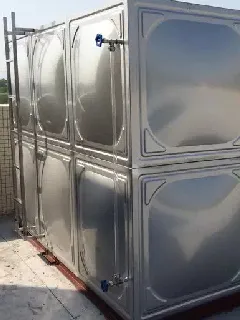loading...
- No. 9, Xingyuan South Street, Dongwaihuan Road, Zaoqiang County, Hengshui, Hebei, China
- admin@zjcomposites.com
- +86 15097380338
- Welcome to visit our website!
Exploring the Benefits and Applications of Fiberglass Reinforcement Bars in Modern Construction Projects
The Rise of Fibreglass Reinforcement Bars A Modern Alternative in Construction
In recent years, the construction industry has experienced a significant transformation due to advances in materials technology. One such innovation making waves is fibreglass reinforcement bars, commonly known as GFRP (Glass Fibre Reinforced Polymer) bars. These bars present an exciting alternative to traditional steel reinforcement, bringing with them numerous advantages and challenges that could reshape construction practices.
Understanding GFRP Bars
Fibreglass reinforcement bars are composite materials made from a combination of glass fibers embedded in a polymer matrix. This innovative structure results in a lightweight yet incredibly strong and durable material. GFRP bars are engineered to withstand various environmental conditions, making them particularly suitable for applications in corrosive environments, such as coastal areas or bridges exposed to de-icing salts.
Advantages of Fibreglass Reinforcement Bars
1. Corrosion Resistance One of the most compelling benefits of GFRP bars is their superior resistance to corrosion compared to traditional steel. This quality significantly extends the lifespan of structures, reduces maintenance costs, and decreases the risk of structural failure due to corrosion-related issues. In regions where high humidity or saline conditions prevail, fibreglass bars prove to be a reliable option.
2. Lightweight GFRP bars are significantly lighter than steel, which simplifies handling and transportation on construction sites. This reduced weight can also translate to lower shipping costs and more efficient installation processes. Workers can easily carry and handle these bars, resulting in improved productivity on-site.
3. Non-Magnetic and Non-Electrical Conductivity Since GFRP bars do not conduct electricity, they are ideal for applications where electromagnetic interference needs to be minimized, such as in hospitals, data centers, or any infrastructure that houses sensitive electronic equipment. Additionally, their non-magnetic properties make them suitable for use in areas where magnetic fields are a concern.
fibreglass reinforcement bar

4. Design Flexibility Fibreglass bars can be manufactured in a variety of shapes and sizes, allowing engineers and architects greater design flexibility. This adaptability leads to innovative architectural designs that may not be feasible with traditional materials, thus pushing the boundaries of modern construction.
Challenges and Considerations
Despite their advantages, GFRP bars also face challenges that must be addressed for their broader acceptance in the construction industry.
1. Cost Currently, GFRP bars can be more expensive than steel reinforcement bars. The initial investment required for materials and construction using fibreglass may deter some developers, especially in cost-sensitive projects. However, when considering the long-term benefits, including reduced maintenance and longer lifespan, the overall lifecycle cost could be favorable.
2. Limited Awareness and Experience The use of GFRP bars in construction is still relatively new, and many engineers and contractors may lack experience with this material. Increased education and training are necessary to harness the full potential of fibreglass reinforcement bars and ensure proper implementation in various projects.
3. Building Codes and Standards As GFRP technology is still emerging, building codes and regulatory standards are often not fully developed or may vary widely by region. The establishment of standardized guidelines is crucial to govern the use of GFRP bars, ensuring safety and reliability.
Conclusion
Fibreglass reinforcement bars represent a modern innovation with the potential to significantly alter traditional construction practices. With their notable advantages, including corrosion resistance, lightweight composition, and design flexibility, GFRP bars are poised to emerge as a competitive alternative to steel reinforcement. As the industry continues to evolve, fostering knowledge and establishing standards for GFRP will be essential to realize its full potential and redefine the future of construction. The integration of these advanced materials could ultimately lead to safer, more durable, and cost-effective structures worldwide.
-
The Rise of FRP Profiles: Strong, Lightweight, and Built to LastNewsJul.14,2025
-
SMC Panel Tanks: A Modern Water Storage Solution for All EnvironmentsNewsJul.14,2025
-
GRP Grating: A Modern Solution for Safe and Durable Access SystemsNewsJul.14,2025
-
Galvanized Steel Water Tanks: Durable, Reliable, and Ready for UseNewsJul.14,2025
-
FRP Mini Mesh Grating: The Safer, Smarter Flooring SolutionNewsJul.14,2025
-
Exploring FRP Vessels: Durable Solutions for Modern Fluid HandlingNewsJul.14,2025
-
GRP Structures: The Future of Lightweight, High-Performance EngineeringNewsJun.20,2025
